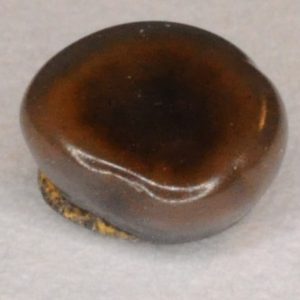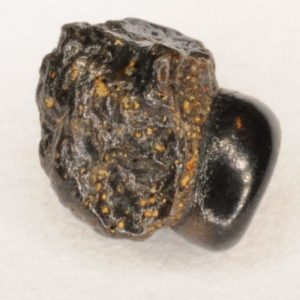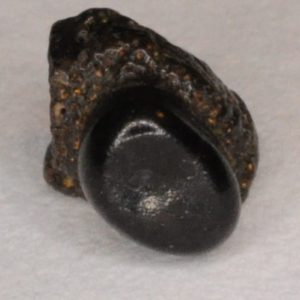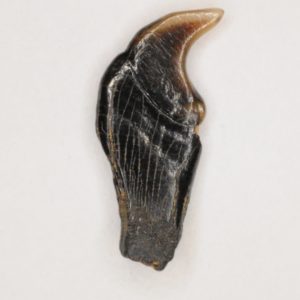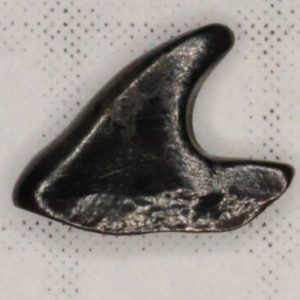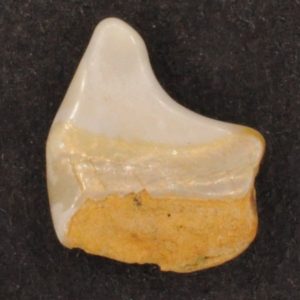NJfossils.com
"Fossils aren't a hobby, they're a lifestyle."Hadrodont (Hadrodus priscus)
Age – Late Cretaceous; Commonality – pharyngeal teeth: less common, oral teeth: very uncommon; Size – pharyngeal teeth: ¼ – ½ inch; oral teeth: 2-5 mm
This fish was similar to Anomoeodus phaseolus. It possessed crushing mouthplates filled with flat circular teeth. These oral teeth were small and usually translucent. The crushing surface possesses a dimple – its surface is concave when looking at it from an occlusal view. The much more common pharyngeal teeth are thin, hook-like, and usually translucent. They formed a comb-like structure that was thought to have retained and further processed food particles. The incisor pharyngeal teeth have a single root (which is never translucent) and the much less common molars are bilobate. The pharyngeal teeth are prone to snapping, especially at the root. Nearly all of the New Jersey specimens are from juveniles.
Oral Teeth
This is a classical oral tooth. It shows a concave occlusal surface and translucency. H. priscus did not shed its oral teeth. Many teeth will show a lot of heavy wear.
This one resembles Anomoeodus phaseolus lateral/vomerine teeth even though it is translucent. Since H. priscus did not shed its teeth, it had roots attached to all the crowns. The crowns are usually found without roots attached. The tiny amount of root left can be seen in the views of the bottom of this crown. A. phaseolus teeth did not possess roots; they attached directly to the mouth plate and were shed off.
This oral tooth is still attached to a section of mouth plate. The hollow section in the mouth plate is where the root would have been.
Another tooth attached to a section of mouth plate. There is a chance this one may actually be A. phaseolus.
Pharyngeal Teeth
This is the most common form of pharyngeal teeth found. This one is around the maximum size of pharyngeal teeth at a little over a 1/2 inch.
This one has a “bulging” form.
This one is from a completely different position than the ones above. It is much more erect. This type is much less common.
Molars are smaller (~1/4 inch) and are bilobate. They are pretty rare.
An opaque pharyngeal crown. This one may be underdeveloped (the crown is hollow, with no root, which means that the root likely did not start forming yet).
A really interesting color on this one. Most are usually a dark tint.




